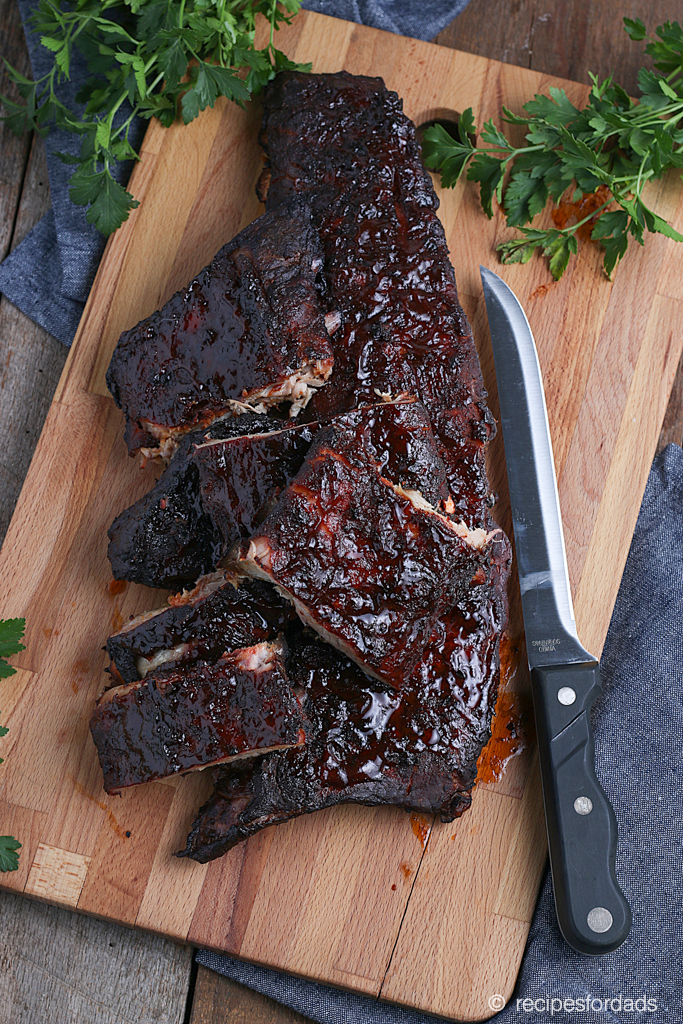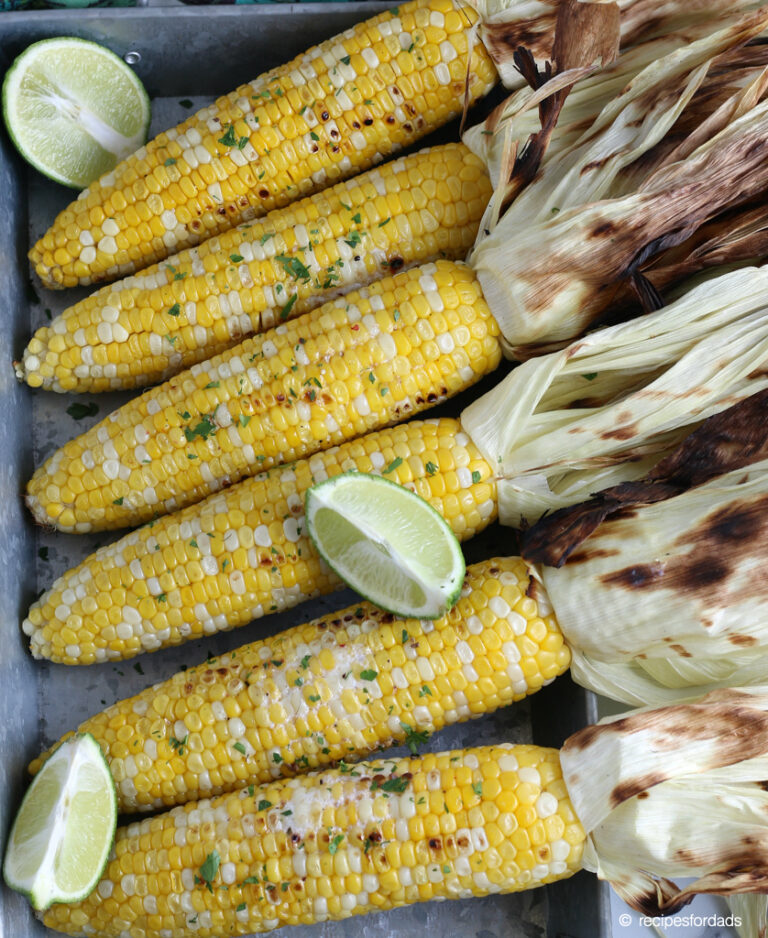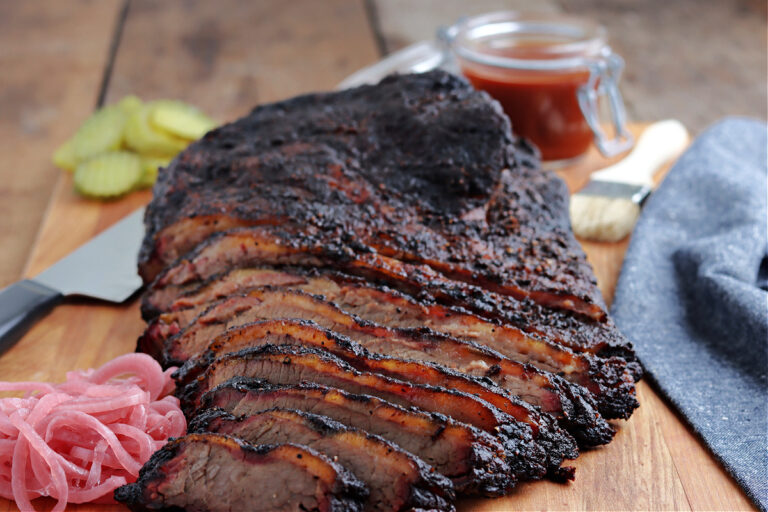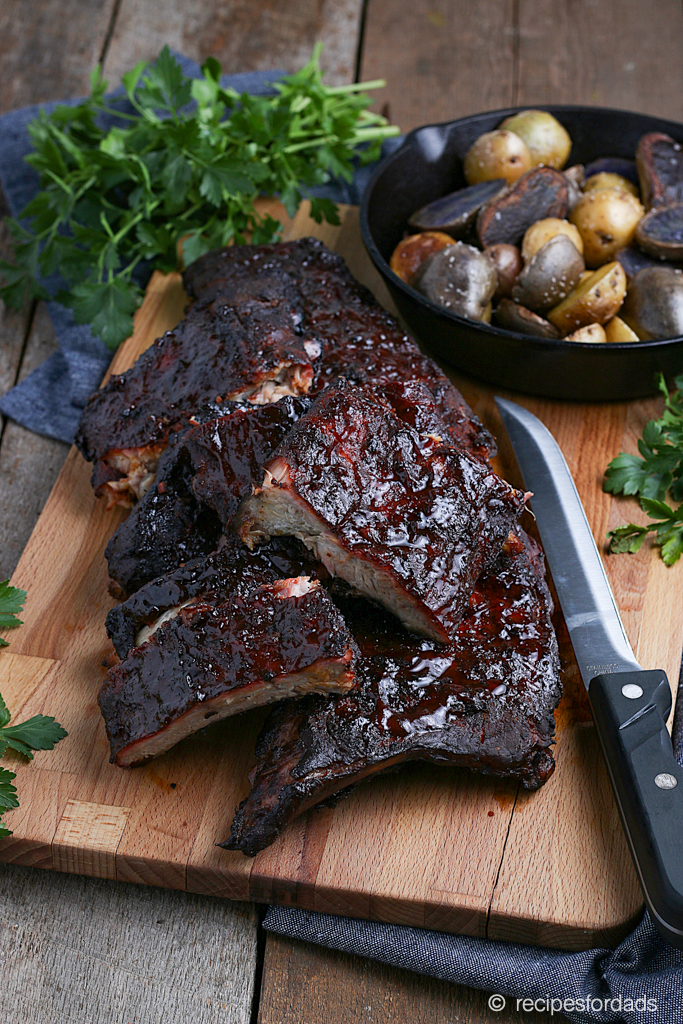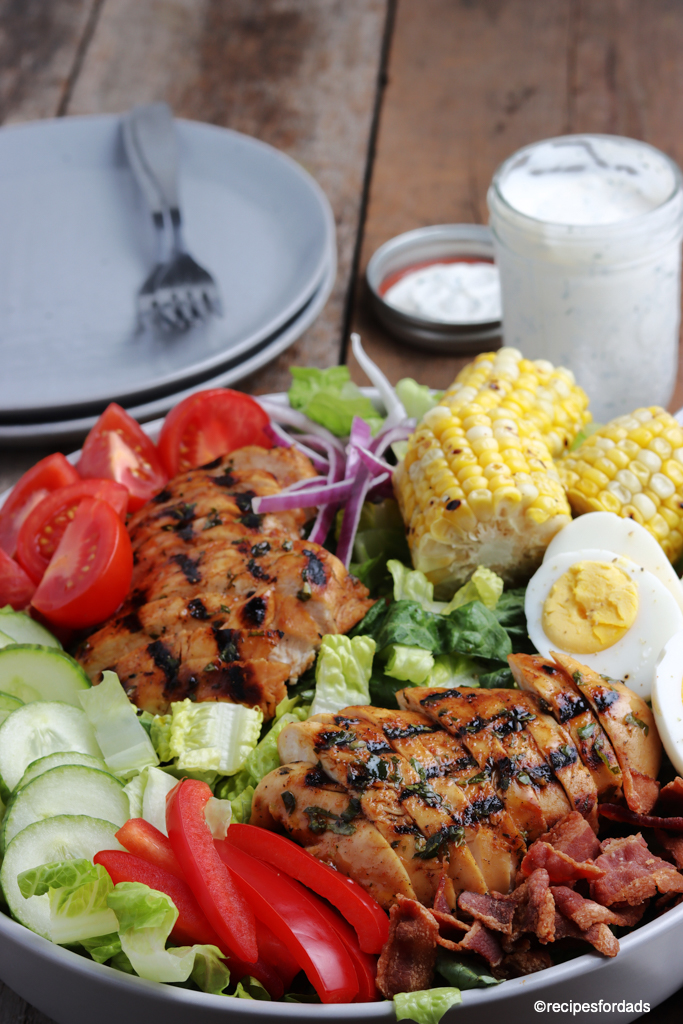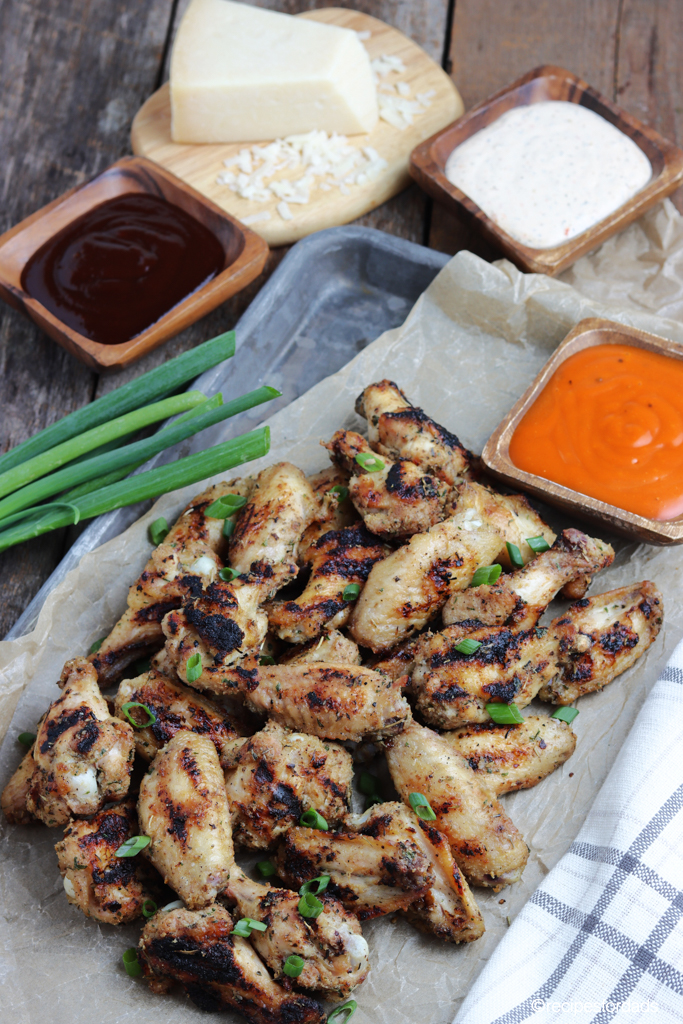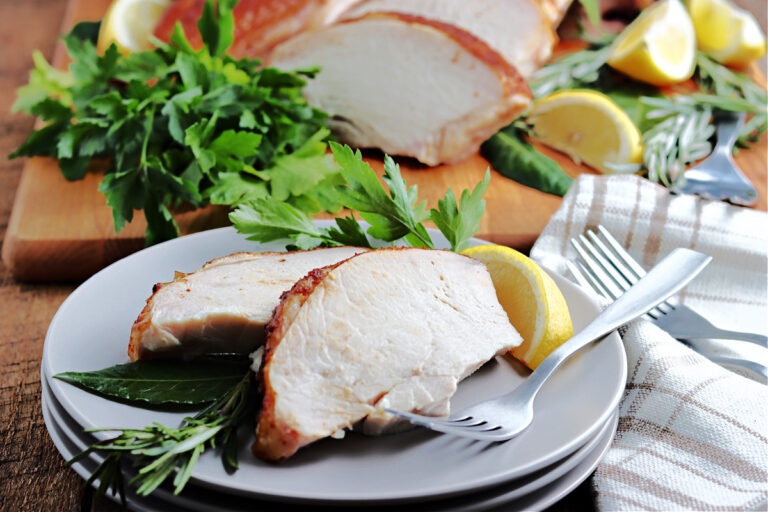This post contains Affiliate Links. Read my full disclosure for more info.
Beef ribs vs pork ribs. Which is your favorite rib? Almost every carnivore loves ribs, and we’ll eat any kind. That being said, it’s nice to know the difference between these two kinds of ribs.
Today, we’ll be comparing the size, taste, meatiness, and more of beef ribs vs short ribs.
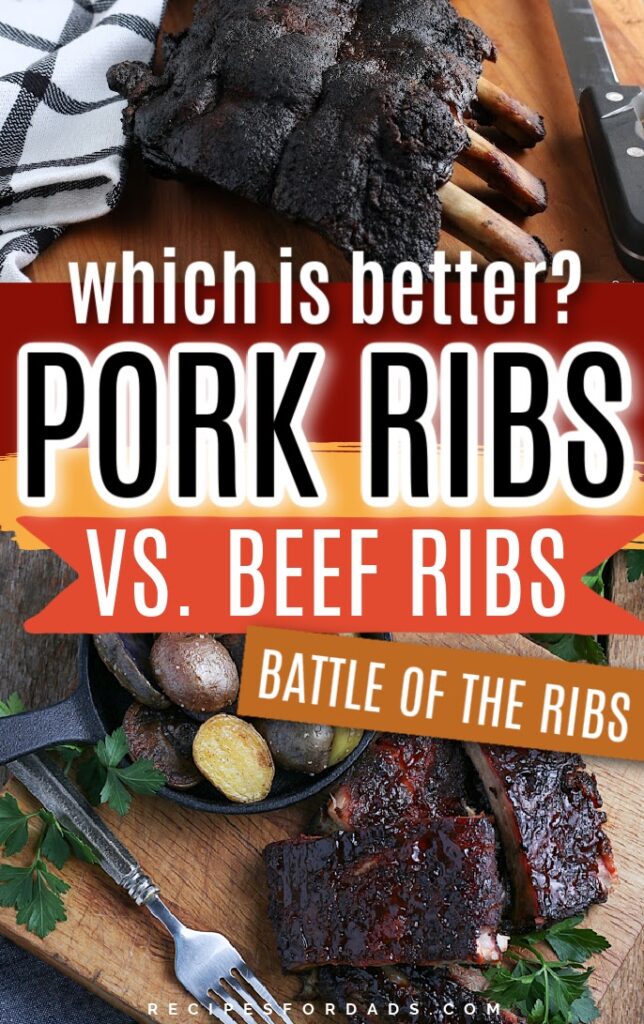
Beef Ribs vs Pork Ribs
Ribs are one of my favorite kinds of meat to cook. Of course, they’re amazing on the barbecue, but you can even cook these tasty cuts in the oven or the slow cooker. What’s more, you can dress them up with almost any kind of sauce you like.
There’s an almost endless variety of ways to cook ribs, making them one of the most versatile cuts of beef or pork out there.
We all know that ribs are great. The real question is this – what’s better? Beef ribs or pork ribs? The answer is the neither is better than the other. They’re just different.
They’re also quite similar. Today, we’re going to talk about the similarities and the differences between these two types of ribs.
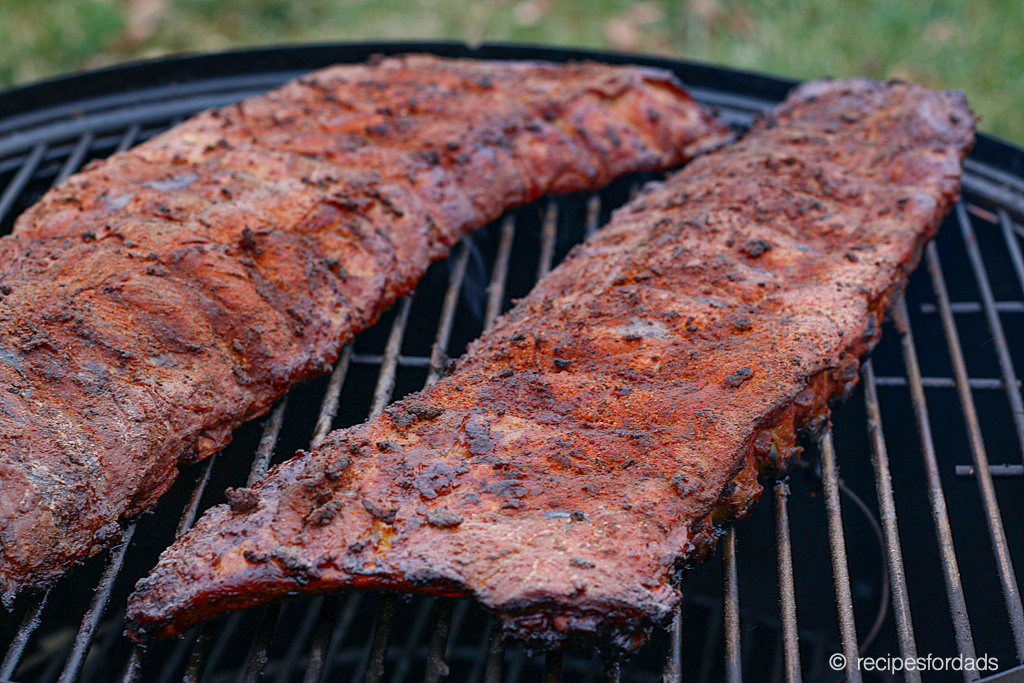
Flavor
Both beef and pork ribs are delicious, but they do have different flavors. Beef ribs have a far stronger flavor than pork ribs, largely owed to something called “umami”.
You’ve probably never heard that word before. I know I hadn’t before I started researching beef ribs vs pork ribs.
Beef Ribs
“Umami” might sound like some sort of Japanese food, but it’s actually one of the tastes that the human tongue can detect.
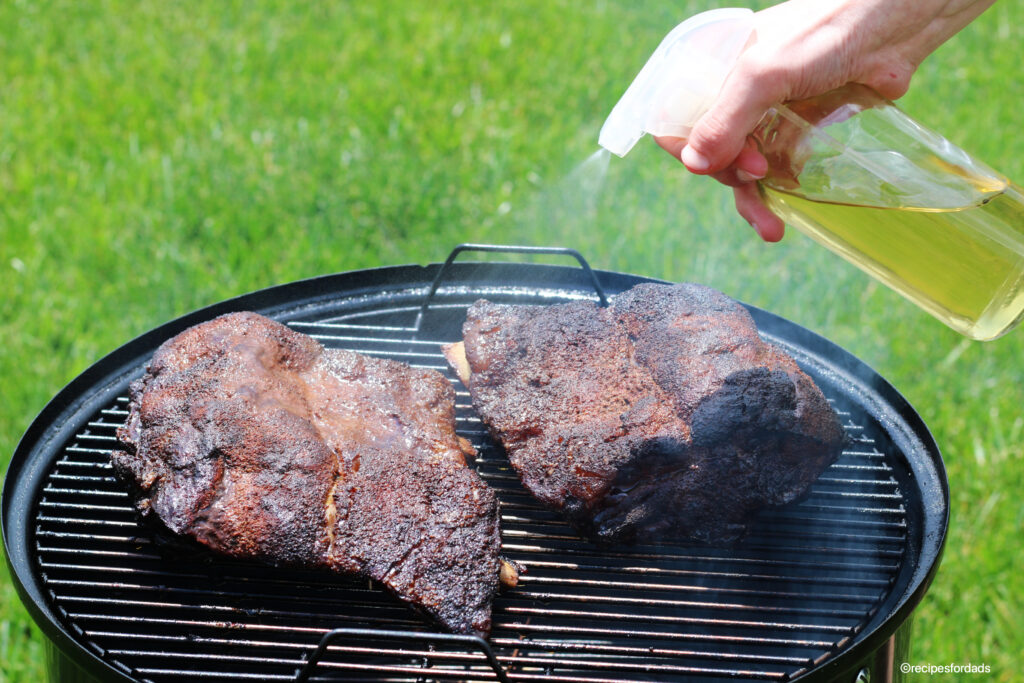
We all know about sweet, sour, salty, and bitter, but not many of us know about the fifth flavor profile – umami.
Umami is a deep, rich flavor released by proteins as we chew them. Along with beef, you’ll find this flavor abundant in mushrooms, carrots, seaweed, and bacon along with a host of other foods.
The depth of that flavor is dependent on the concentration of this flavor in the proteins.
Beef is chock full of it, so you’ll get a rich, deep flavor that is, unfortunately, best described as “beefy”.
Pork Ribs
Conversely, pork ribs don’t release nearly as much umami, so they have a much more mellow flavor profile. In fact, when cooked without any sort of sauce or rub, they taste almost like pork chops.
They’re mild and satisfying – a cut that isn’t overpowering in its favor.
You might immediately think, “Well, obviously beef ribs win,” but you’d be wrong. The great thing about the mild flavor of pork ribs is that they pair with almost any flavor you can think of.
It’s much easier – and more forgiving – to get creative with flavors when it comes to pork ribs.
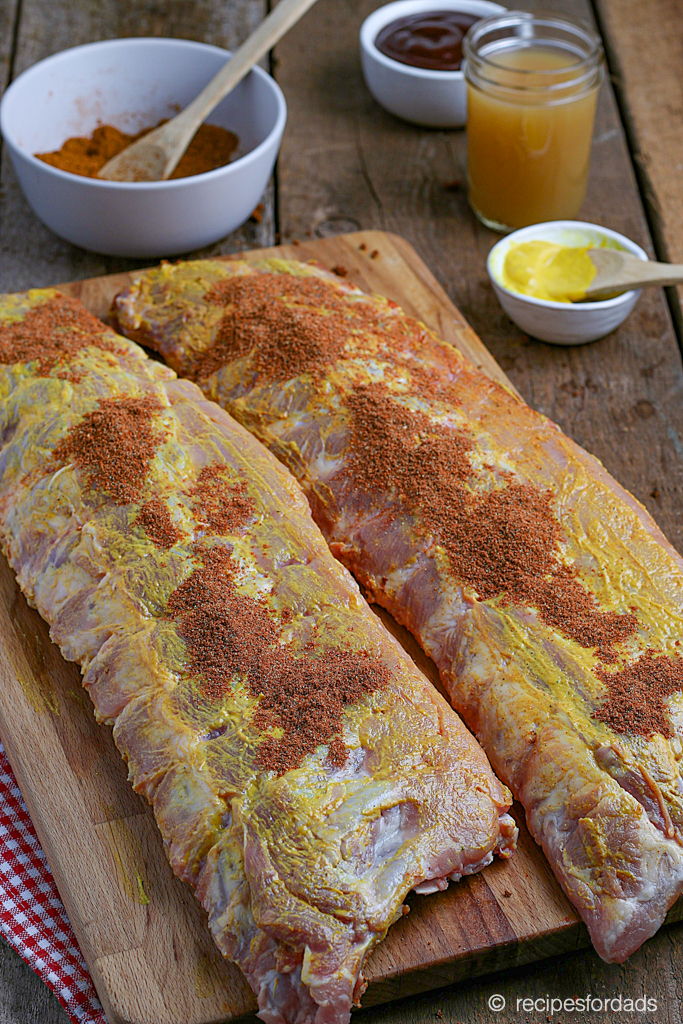
The Size of Beef Ribs vs Pork Ribs
Obviously, beef ribs are far larger than pork ribs. At least they are before they’re trimmed and ready for packaging.
Cows are far larger than pigs, so it’s only natural that beef ribs would be far larger than pork ribs.
Beef Ribs
Beef ribs can be so enormous that they’re sometimes packaged and sold as “dinosaur ribs”. If you’re picturing a massive rib, you’re right.
These behemoths can be as long as 12 inches and weigh more than two pounds.
Although you can find “dinosaur ribs” at the butcher and at some grocery stores after they’ve been trimmed and prepared for commercial sale, most racks of beef ribs are about the same size as pork ribs, maybe a little larger.
Related: Check out my beef ribs recipe and learn how to smoke them
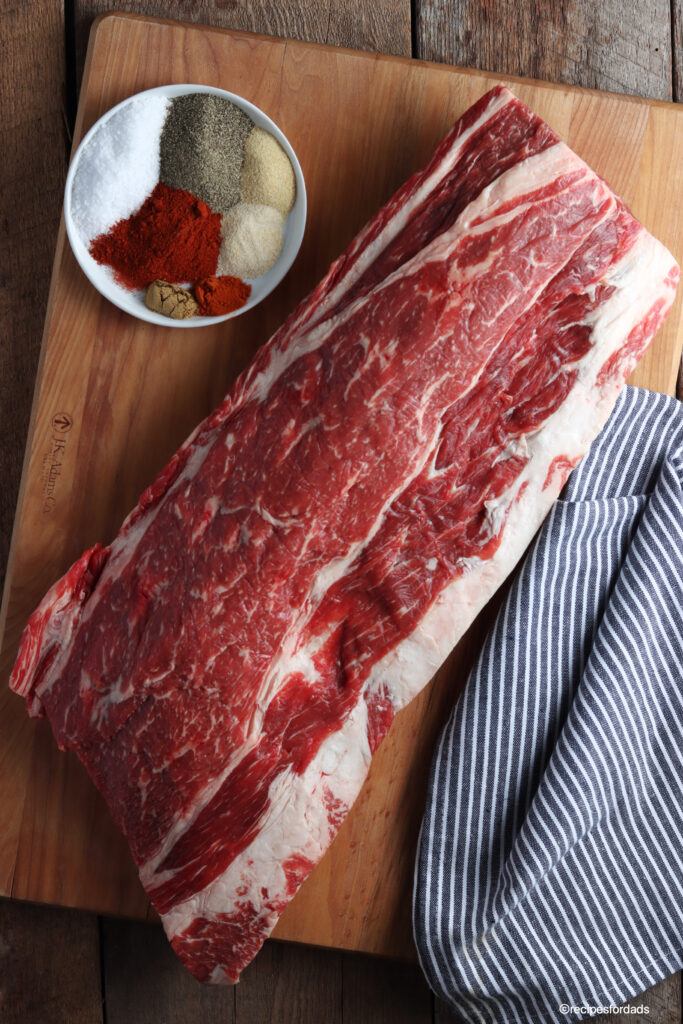
Pork Ribs
Pork ribs are far smaller than beef ribs. They’re measured in ounces, not pounds, and they never need to be trimmed down to size. These ribs are only a few inches long. No dinosaurs here.
Beef Ribs vs Pork Ribs – Different cuts and variations of Ribs
Beef ribs and pork ribs both come in various cuts. Like all other sections of the cow or pig, the butcher will divide the ribs into various types of ribs, each with its own distinct look and feel.
1. Beef Rib Cuts
We’ve established that beef ribs are massive. Because a full, uncut rack of beef ribs would essentially be half a cow, butchers divide beef ribs into three main cuts.
Some butchers further divide them, but the following three are the main ones you’ll generally find.
2. Plate Short Ribs
Plate short ribs come from the lower section of the cow’s rib cage, and they’re absolutely loaded with meat. They’re also absolutely ginormous.
Also called beef short ribs, these massive racks will make you feel like you need two people to lift them. Not really, but they are huge.
3. Chuck Short Ribs
Chuck short ribs aren’t quite as huge as plate short ribs, but they’re still quite large. They come from an area of the ribs that is a little further up toward the back of the cow.
These ribs have smaller bones, but they still hold a lot of meat. These ribs are also far more common at grocery stores than plate short ribs.
4. Beef Back Ribs
As you might expect from the name, beef back ribs come from the section of ribs found on the cow’s back. These ribs are far smaller than plate or chuck short ribs, but they have amazing flavor and texture.
They should, as their meat is the same as the meat you’d find on a prime rib roast.
While plate and chuck short ribs are layered with meat over the bone, all the tender delicious meat on beef back ribs is found between the bones.
5. Pork Rib Cuts
Unlike beef ribs, pork ribs are far more varied in their selection. This is because with a smaller area to work with and smaller bones to contend with, butchers are freer to manipulate the ribs.
6. Baby Back Ribs
Also called “loin ribs” or “back ribs”, baby back ribs are the kind you’ll most often find in restaurants because they cook so quickly and are a convenient size for eating.
These ribs are cut from the highest point on the pig’s ribcage and are lean and tender.
Related: Check Out my Lip Smacking Smoked Baby Back Ribs Cooking with the 3-2-1 Method
7. Spare Ribs
Spare ribs are one of the most popular cuts of pork ribs out there. Called “side ribs” or just “spares”, spare ribs begin where baby back ribs end. These ribs travel down the side of the pig to the breastbone.
They’re mostly straight rather than curved, and they have more meat on them. They’re also a bit less tender, but that’s balanced by more flavor.
8. St. Louis Ribs
St. Louis Ribs are a trimmed and neatened-up version of spare ribs. For this cut, the butcher removes the cartilage and small pieces of bones from the ends of the spare ribs and then squares off the sides.
These ribs are flat and rectangular and make for an excellent look when plating. However, they can be difficult to find if you don’t actually live IN St. Louis. Your best bet is to visit a local butcher or simply make your own.
9. Rib Tips
Rib tips are what’s left over after the butcher has trimmed up the spare ribs to turn them into St. Louis Ribs. These tips are extremely tender and flavorful thanks to their heavy marbling throughout.
However, be aware that all that marbling also makes them very fatty, so you’ll be doing a lot of picking and nibbling when you eat them.
10. Country Syle Ribs
Country-style ribs aren’t actually ribs at all, but “ribs” is in the name, so I’m talking about them. Country-style ribs are actually pork chops that come from the fatty, muscular section of the shoulder blade near the loin.
You can find these ribs bone-in or boneless. When they have a bone, it’s not actually a rib bone. Rather, it’s part of the scapula or shoulder blade.
While these aren’t technically ribs, they are delicious and are very good when cooked in the same manner as actual ribs.
Beef Ribs vs Pork Ribs – Fat Content
As we’ve all heard, fat equals flavor, however, you want some meat to go with all of that flavor. In addition, some people prefer leaner meat than other people do.
We’re going to talk about the different fat content in beef and pork ribs so you can choose which is right for you.
Beef Ribs
You might be surprised to know that beef ribs have far more fat than pork ribs. Beef ribs are heavily marbled, which gives them an absolute ton of flavor.
And speaking of tonnage, while beef ribs tend to be fattier than pork ribs, you’ll still most often end up with a mountain of tender beef on your plate when you eat beef ribs.
Pork Ribs
Pigs might be known for being porky – pun intended – but their rib meat is actually far less fatty than beef. Pork ribs have a sliding scale of fattiness.
At the top of the ribcage, they’re very lean, but as you journey down the ribs toward the belly they become fattier.
Beef Ribs vs Short Ribs – Cooking
Beef ribs and short ribs differ in flavor and fat content, so there are different ways of cooking each type.
The main differences are in the types of wood you’ll use when smoking, however.
Beef Ribs
To begin, you’ll almost never have to remove the membrane from beef ribs the way you have to with pork.
In fact, if you leave it on, it helps keep the meat in place after it’s been cooked to fall-off-the-bone perfection.
Seasoning
Beef ribs are a naturally flavorful cut of meat, so there’s no need to get crazy with your seasonings. Salt and pepper are best when cooking these ribs.
You could add a little garlic salt or chill, but that’s about it.
Temperature
Beef ribs do well with the classic low and slow approach, so set your smoker at between 225 degrees and 250 degrees. As with anything worth having, it’s worth the wait.
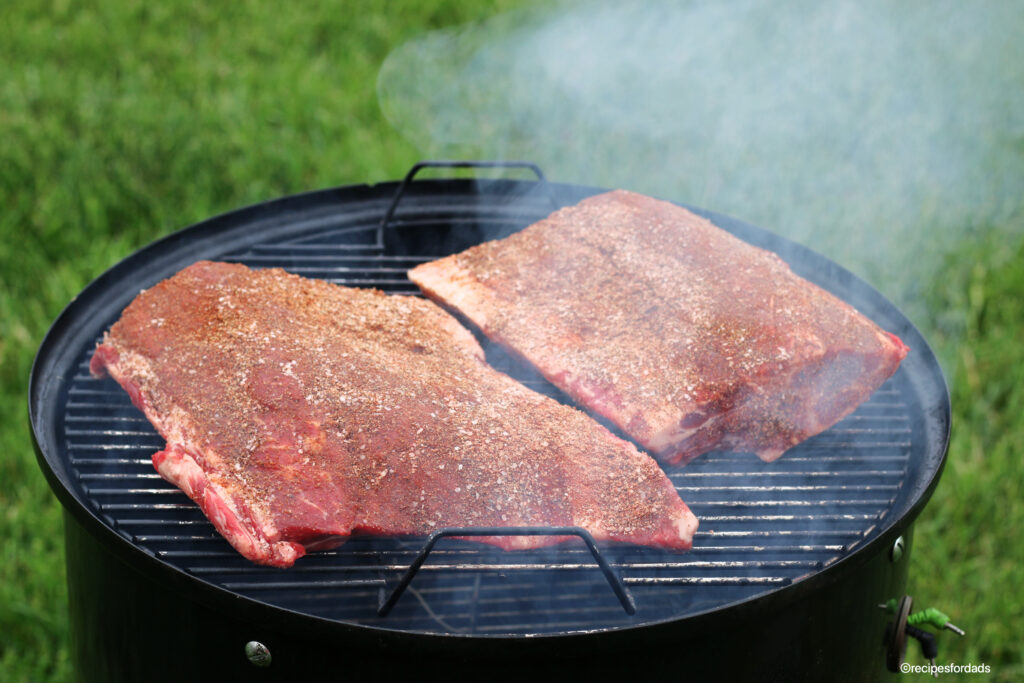
If you need to shave some time off of your cooking, you can push the heat to between 275 degrees and 300 degrees. Beef ribs are substantial, and they can take the higher heat and still come out tender and delicious.
Wood Choice
Mesquite and hickory are both classic woods to use when smoking beef ribs. Pecan, oak, and cherry also add a rich depth of flavor.
Beef has a strong natural flavor, so don’t use mellow woods like maple or alder. The beef will simply overpower them.
Related: Best Wood for Smoking Meats
Pork Ribs
Pork ribs can be cooked in a variety of ways from smoking to cooking them in a slow cooker. For our purposes, we’ll be talking about smoking ribs.
Preparation
Unlike beef ribs, you should absolutely remove the membrane from your pork ribs. Beef ribs are thick and meaty, and leaving the membrane on actually helps keep the meat on the bone until you’re ready to rip it off.
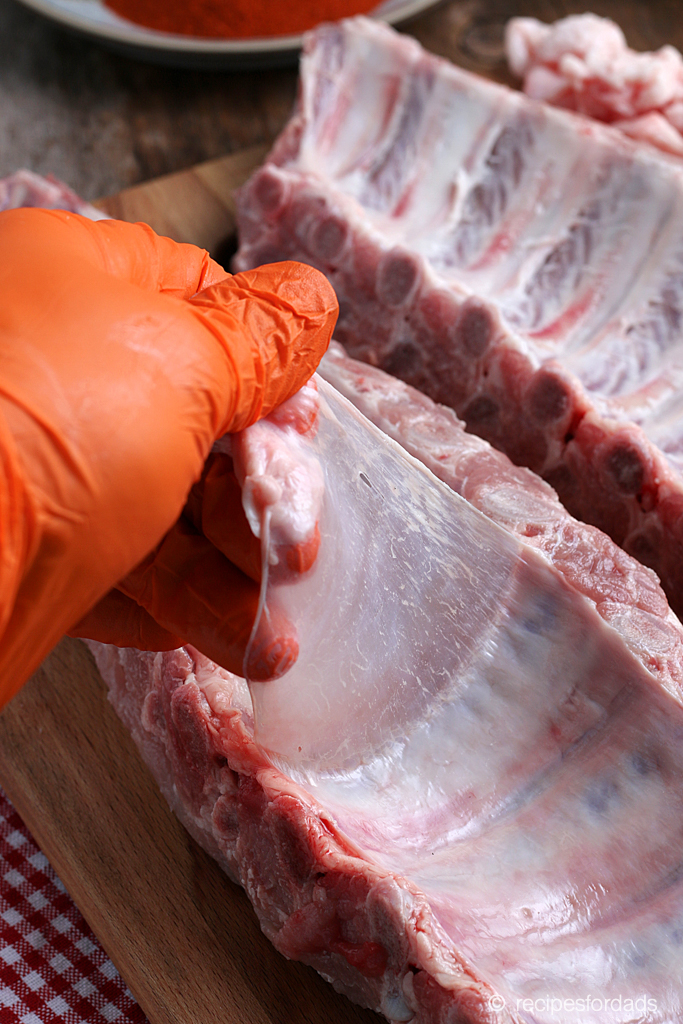
Conversely, pork ribs don’t have such a high meat-to-bone ratio. It only takes one bit to get all the way through the rib meat and down to that tough membrane, so be sure to remove it.
Seasoning
Pork ribs have a mild flavor and they’re much leaner than beef. To get a nice, tender rib that’s also full of flavor, you’ll first want to brine or marinate your ribs. Then, massage in your spice rub. As pork is so mild, you can season as liberally as you’d like.
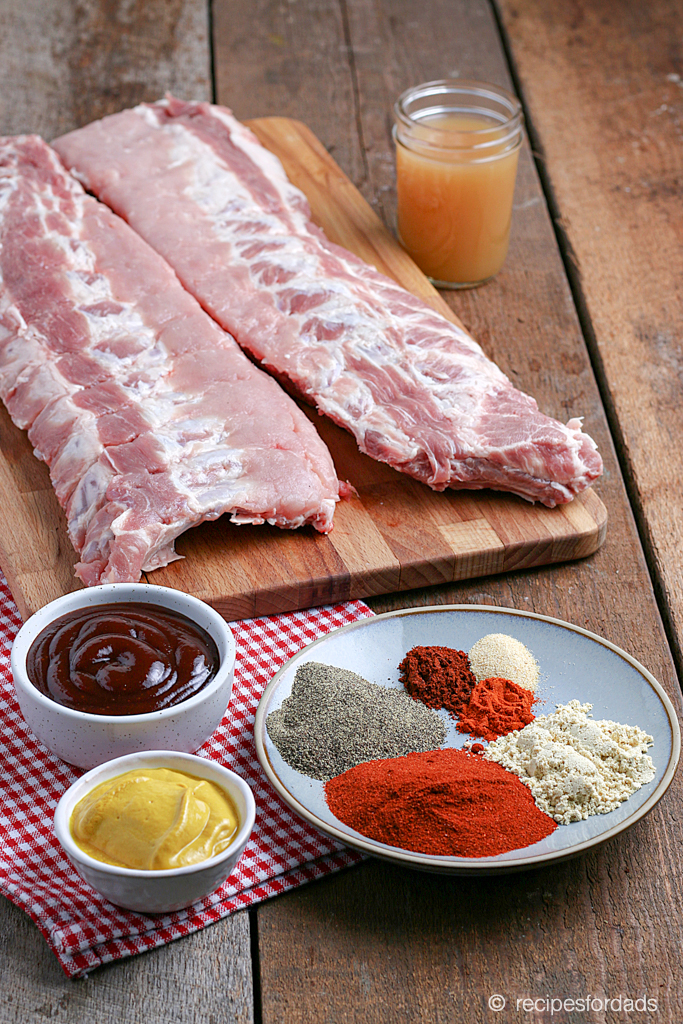
Temperature
Unlike beef ribs, pork ribs can be smoked at a variety of temperatures depending on which cut is used.
A general rule of thumb, however, is that pork ribs are cooked at between 225 degrees and 250 degrees. You’ll rarely see them cooked at anything higher, as it will dry out the meat in most cases.
Wood Choice
Because pork is such a wonderful canvas on which to paint flavors due to its mild flavor, your choice of wood is really anything you want it to be.
Most seasoned smokers tend to choose mesquite or hickory for that classic flavor most of us associate with ribs.
However, you could also opt for woods that give a lighter, more nuanced flavor like apple, cherry, or maple. Pork ribs are so mild, they’re perfect for trying all kinds of pairings.
Beef Ribs vs Pork Ribs – The Winner Is…
When it comes to beef ribs vs pork ribs, the clear winner is you! Both beef and pork ribs are absolutely delicious when prepared correctly. It all comes down to personal preference.
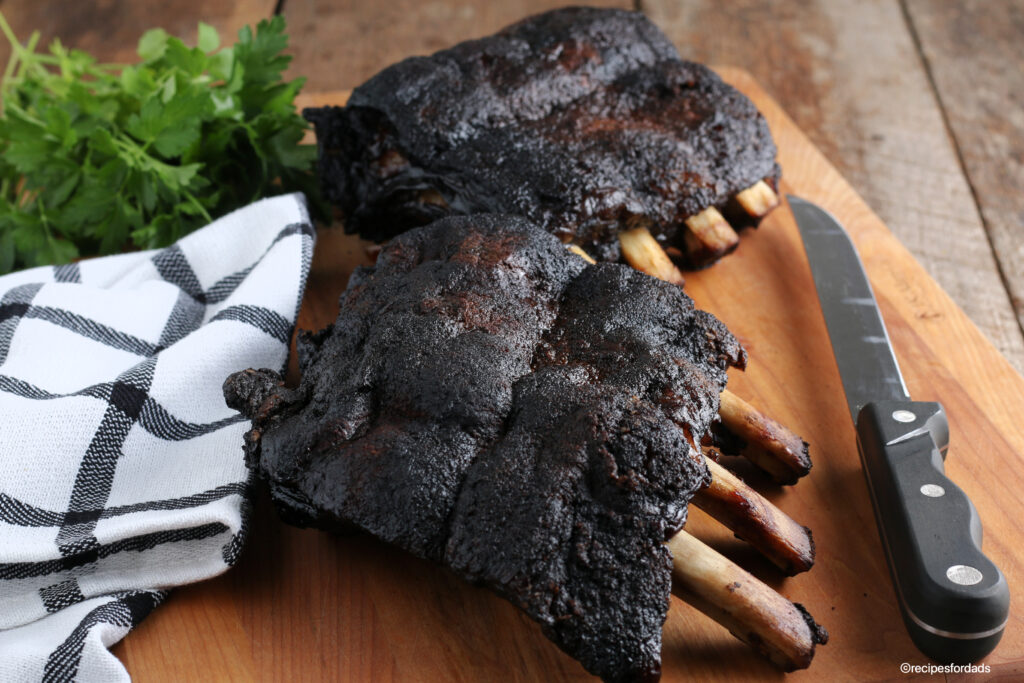
If you like big, bold flavor that comes right from the meat and not heavy seasoning, then beef ribs are for you. If you love more mellow meat that allows for creativity with seasoning, then opt for pork.
The same holds true for fat content. If you like your meat to be marbled and dripping with juices, beef is the way to go. For leaner – but still tender meat – choose pork.
Whatever you choose, you’ll always win the discussion when it comes to beef ribs vs pork ribs. There really is no right answer.
